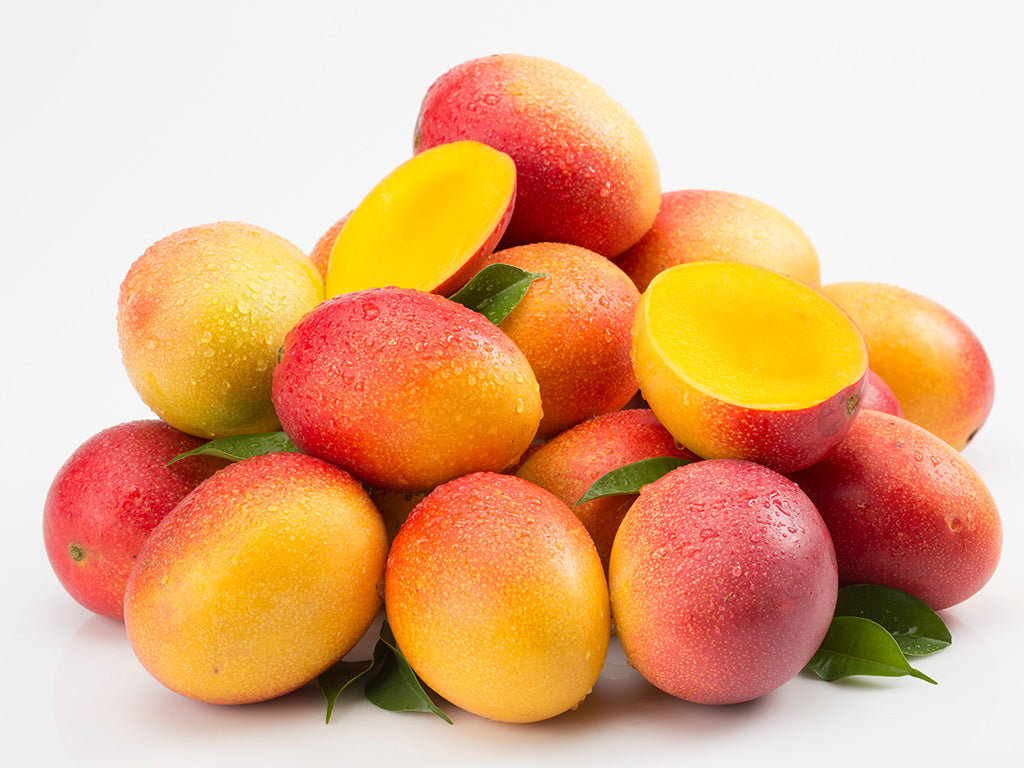
The Marvelous World of Mangos: Types, Benefits, and Seasonality
Share
The Marvelous World of Mangos: Types, Benefits, and Seasonality
Mangos are not just a fruit; they are an emotion for many. Revered as the ‘king of fruits,’ mangos hold a special place in the hearts of fruit lovers around the world. With their rich, sweet taste and versatile culinary applications, they are a true summer delight. In this blog post, we'll dive deep into the world of mangos – their types, incredible benefits, and seasonality.
A Peek into the Different Types of Mangos:
-
Alphonso (Hapus): Native to India, this is often considered the best mango in terms of sweetness and richness. Alphonso has a distinctive creamy texture and is deep saffron in color.
-
Haden: Originating in Florida, the Haden mango has a vibrant red skin with yellow undertones. Its juicy flesh and mildly sweet taste make it a popular choice among mango enthusiasts.
-
Tommy Atkins: This is one of the most commonly found mangos in U.S. supermarkets. It has a dark red skin with green and yellow hues, with a mildly sweet and fibrous flesh.
-
Kent: Originating from Florida, Kent mangos are large with minimal fiber. They have a sweet and rich taste, with a hint of peachy flavor.
-
Ataulfo (Honey or Champagne Mango): A small-sized mango with buttery, smooth flesh and a sweet taste. They are bright yellow and have a slight curve at the bottom.
-
Langra: Hailing from Northern India, the Langra mango is green in color and maintains its green hue even when ripe. It offers a tangy and aromatic flavor.
-
Dashehari: Another variety from India, Dashehari is juicy, aromatic, and moderately sweet.
This is just the tip of the iceberg; there are over 500 varieties of mangoes worldwide, each with its unique taste and texture.
Benefits of Consuming Mangos:
-
Rich in Nutrients: Mangos are packed with vitamins, especially vitamin C and vitamin A, which play crucial roles in immunity and vision respectively.
-
Digestive Health: They contain enzymes like amylases that aid in digestion and breaking down complex carbs.
-
Skin and Hair: Mangos provide a good amount of vitamin E, which can enhance hair and skin health.
-
Heart Health: The magnesium and potassium found in mangos support healthy heart function and blood pressure levels.
-
Boosting Immunity: The generous amount of vitamin A and C, along with 25 different kinds of carotenoids, keep your immune system strong and functioning optimally.
-
Eye Health: The beta-carotene in mangos gets converted into vitamin A, which promotes good eyesight and prevents night blindness.
Seasonality of Mangos:
Mango season largely depends on the region and variety. Generally:
- In the United States, the mango season runs from May to September.
- In India, it is from March to July.
- In Australia, the season spans November to February.
However, with so many varieties, somewhere around the world, a type of mango is always in season!
Conclusion:
Mangos are truly a gift of nature. They are not only delectable but also packed with a myriad of health benefits. Their versatility means they can be eaten fresh, made into smoothies, added to salads, or even used in cooking. So the next time you savor this delightful fruit, take a moment to appreciate the vast world of mangos and all they have to offer!